Section 12. Sea Lane Operations
3-12-1. APPLICATION
Where sea lanes are established and controlled, apply
the provisions of this section.
3-12-2. DEPARTURE SEPARATION
Separate a departing aircraft from a preceding
departing or arriving aircraft using the same sea lane
by ensuring that it does not commence takeoff until:
a. The other aircraft has departed and crossed the
end of the sea lane or turned to avert any conflict. (See
FIG 3-12-1). If you can determine distances by
reference to suitable landmarks, the other aircraft
need only be airborne if the following minimum
distance exists between aircraft:
1. When only Category I aircraft are involved-
1,500 feet.
2. When a Category I aircraft is preceded by a
Category II aircraft- 3,000 feet.
3. When either the succeeding or both are
Category II aircraft- 3,000 feet.
4. When either is a Category III aircraft-
6,000 feet. (See FIG 3-12-2.)
FIG 3-12-1
Sea Lane Departure Operations
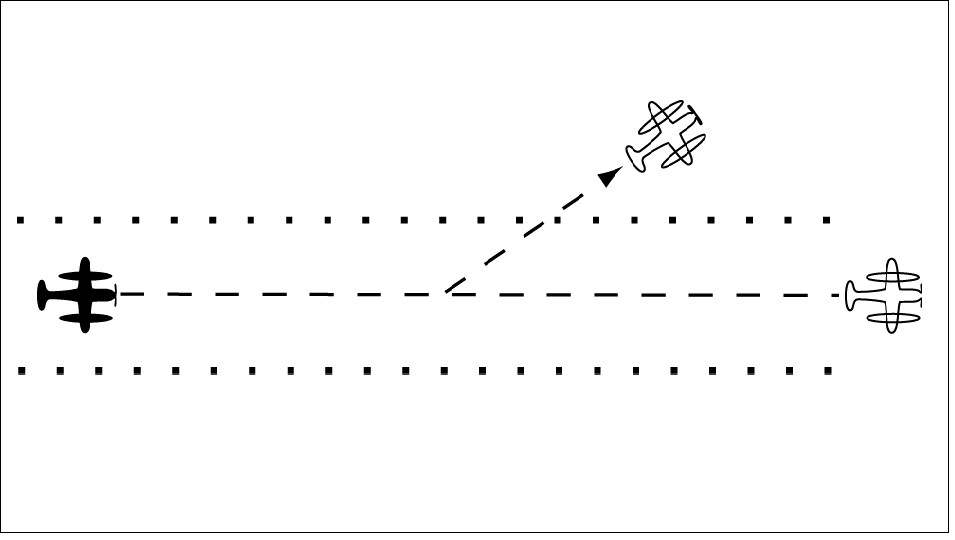
FIG 3-12-2
Sea Lane Departure Operations
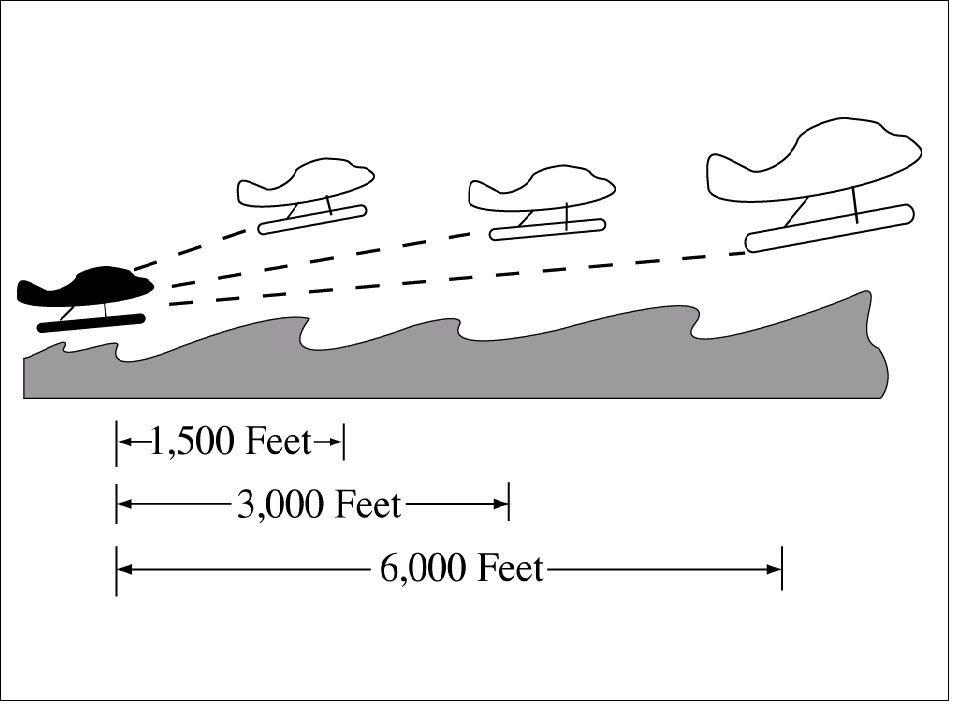
b. A preceding landing aircraft has taxied out of
the sea lane.
NOTE-
Due to the absence of braking capability, caution should be
exercised when instructing a float plane to hold a position
as the aircraft will continue to move because of prop
generated thrust. Therefore, clearance to line up and wait
should be followed by takeoff or other clearance as soon as
is practical.
3-12-3. ARRIVAL SEPARATION
Separate an arriving aircraft from another aircraft
using the same sea lane by ensuring that the arriving
aircraft does not cross the landing threshold until one
of the following conditions exists:
a. The other aircraft has landed and taxied out of
the sea lane. Between sunrise and sunset, if you can
determine distances by reference to suitable
landmarks and the other aircraft has landed, it need
not be clear of the sea lane if the following minimum
distance from the landing threshold exists:
1. When a Category I aircraft is landing behind
a Category I or II- 2,000 feet. (See FIG 3-12-3.)
FIG 3-12-3
Sea Lane Arrival Operations
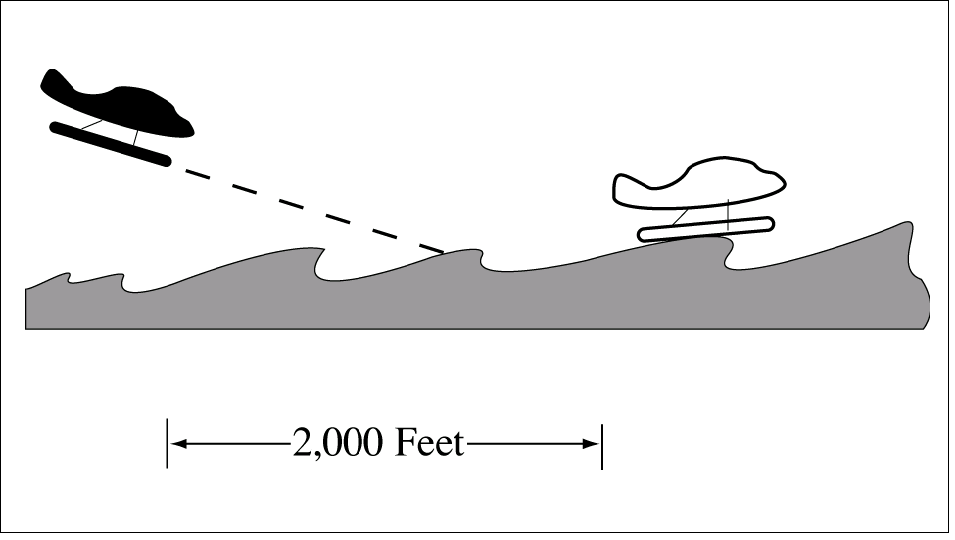
2. When a Category II aircraft is landing behind
a Category I or II- 2,500 feet. (See FIG 3-12-4.)
FIG 3-12-4
Sea Lane Arrival Operations
[View 2]
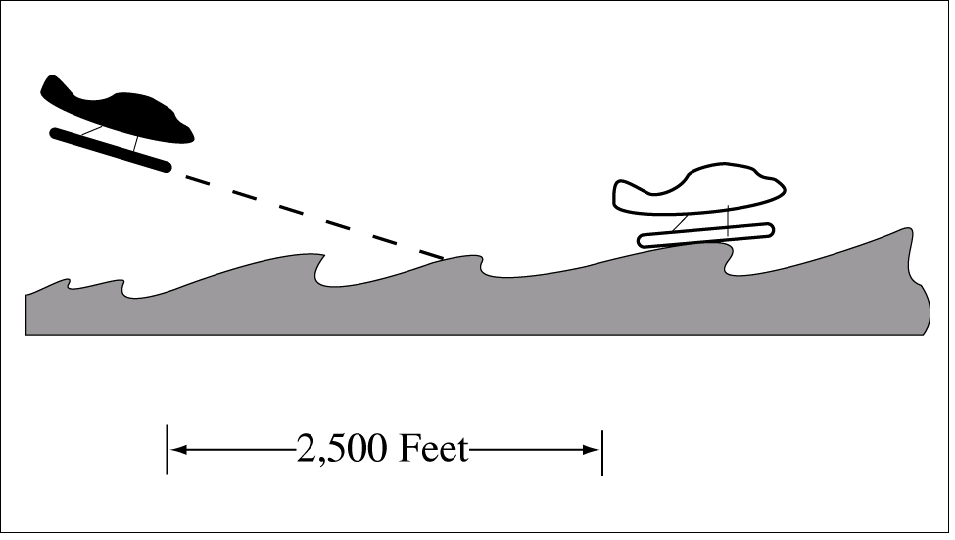
b. The other aircraft has departed and crossed the
end of the sea lane or turned to avert any conflict. (See
FIG 3-12-5.) If you can determine distances by
reference to suitable landmarks and the other aircraft
is airborne, it need not have crossed the end of the sea
lane if the following minimum distance from the
landing threshold exists:
1. When only Category I aircraft are involved-
1,500 feet.
2. When either is a Category II aircraft-
3,000 feet.
3. When either is a Category III aircraft-
6,000 feet. (See FIG 3-12-6.)
FIG 3-12-5
Sea Lane Arrival Operations
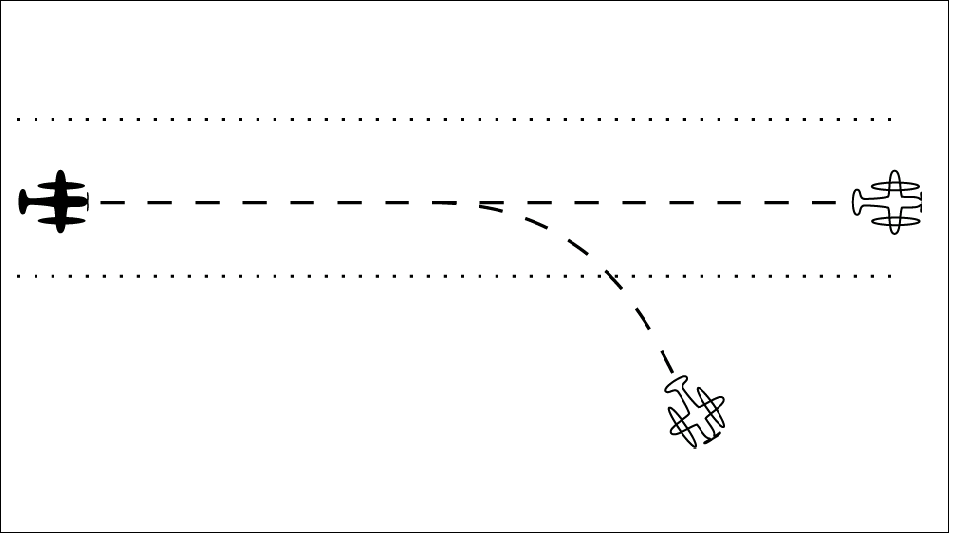
FIG 3-12-6
Sea Lane Arrival Operations
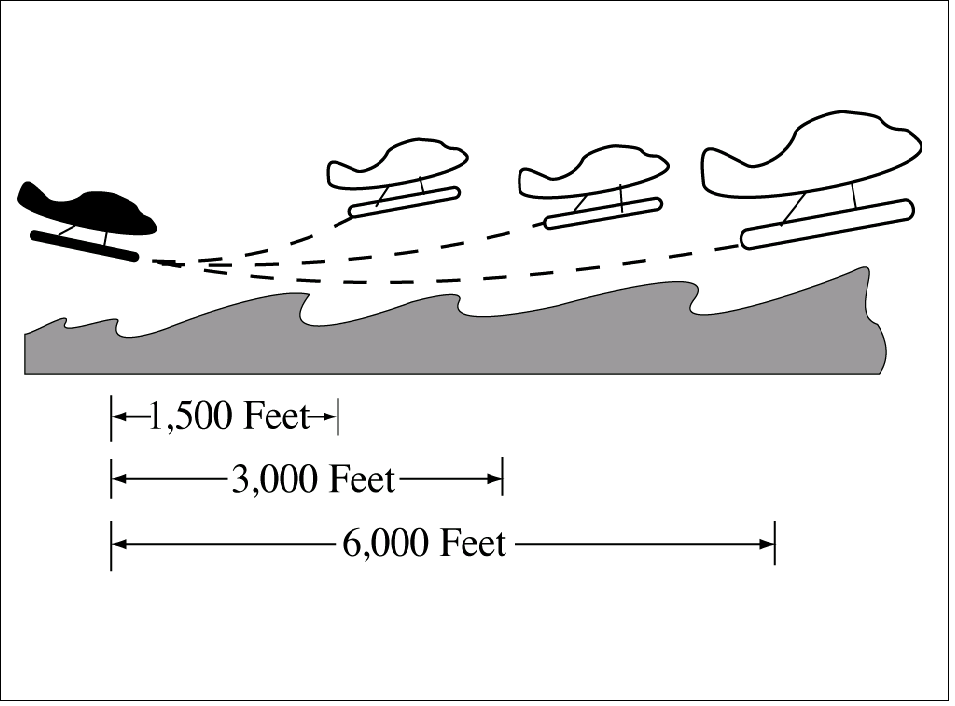
|
